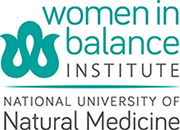Xenoestrogens are found in a variety of everyday items. Many of us don’t think twice about the makeup we wear each day or the plastic container we use to pack our lunch. We know organic food is supposed to be better for us, but sometimes we just don’t want to pay the extra money. Unfortunately, all of the above may be altering the way our body naturally functions because they all contain endocrine disruptors called, xenoestrogens.
Endocrine disruptors are a category of chemicals that alter the normal function of hormones. Normally, our endocrine system releases hormones that signal different tissues telling them what to do. When chemicals from the outside get into our bodies, they have the ability to mimic our natural hormones; blocking or binding hormone receptors. This is particularly detrimental to hormone sensitive organs like the uterus and the breast, the immune and neurological systems, as well as human development.
Xenoestrogens are a sub-category of the endocrine disruptor group that specifically have estrogen-like effects. Estrogen is a natural hormone in humans that is important for bone growth, blood clotting and reproduction in men and women. The body regulates the amount needed through intricate biochemical pathways. When xenoestrogens enter the body they increase the total amount of estrogen resulting in a phenomenon called, estrogen dominance. Xenoestrogens are not biodegradable so, they are stored in our fat cells. Build up of xenoestrogens have been indicated in many conditions including: breast, prostate and testicular cancer, obesity, infertility, endometriosis, early onset puberty, miscarriages and diabetes.
Below is a list of some of the sources of xenoestrogens, but it is by no means exhaustive. We are constantly exposed to these substances in the world we live in. Examples of everyday items that may include xenoestrogens are: fruits and vegetables sprayed with pesticides, plastic water bottles and Tupperware, nail polish, makeup, birth control and on and on.
Here are some of the chemicals that are xenoestrogens:
- Skincare:
- 4-Methylbenzylidene camphor (4-MBC) (sunscreen lotions)
- Parabens (methylparaben, ethylparaben, propylparaben and butylparaben commonly used as a preservative)
- Benzophenone (sunscreen lotions)
- Industrial products and Plastics:
- Bisphenol A (monomer for polycarbonate plastic and epoxy resin; antioxidant in plasticizers)
- Phthalates (plasticizers)
- DEHP (plasticizer for PVC)
- Polybrominated biphenyl ethers (PBDEs) (flame retardants used in plastics, foams, building materials, electronics, furnishings, motor vehicles).
- Polychlorinated biphenyls (PCBs)
- Food:
- Erythrosine / FD&C Red No. 3
- Phenosulfothiazine (a red dye)
- Butylated hydroxyanisole / BHA (food preservative)
- Building supplies:
- Pentachlorophenol (general biocide and wood preservative)
- Polychlorinated biphenyls / PCBs (in electrical oils, lubricants, adhesives, paints)
- Insecticides:
- Atrazine (weed killer)
- DDT (insecticide, banned)
- Dichlorodiphenyldichloroethylene (one of the breakdown products of DDT)
- Dieldrin (insecticide)
- Endosulfan (insecticide)
- Heptachlor (insecticide)
- Lindane / hexachlorocyclohexane (insecticide, used to treat lice and scabies)
- Methoxychlor (insecticide)
- Fenthion
- Nonylphenol and derivatives (industrial surfactants; emulsifiers for emulsion polymerization; laboratory detergents; pesticides)
- Other:
- Propyl gallate
-
- Chlorine and chlorine by-products
- Ethinylestradiol (combined oral contraceptive pill)
- Metalloestrogens (a class of inorganic xenoestrogens)
- Alkylphenol (surfactant used in cleaning detergents
So what can you do to avoid these common chemicals? The following list was adapted from the organic excellence website.
Guidelines to minimize your personal exposure to xenoestrogens:
Food
- Avoid all pesticides, herbicides, and fungicides.
- Choose organic, locally-grown and in-season foods.
- Peel non-organic fruits and vegetables.
- Buy hormone-free meats and dairy products to avoid hormones and pesticides.
Plastics
- Reduce the use of plastics whenever possible.
- Do not microwave food in plastic containers.
- Avoid the use of plastic wrap to cover food for storing or microwaving.
- Use glass or ceramics whenever possible to store food.
- Do not leave plastic containers, especially your drinking water, in the sun.
- If a plastic water container has heated up significantly, throw it away.
- Don’t refill plastic water bottles.
- Avoid freezing water in plastic bottles to drink later.
Household Products
- Use chemical free, biodegradable laundry and household cleaning products.
- Choose chlorine-free products and unbleached paper products (i.e. tampons, menstrual pads, toilet paper, paper towel, coffee filters).
- Use a chlorine filter on shower heads and filter drinking water
Health and Beauty Products
- Avoid creams and cosmetics that have toxic chemicals and estrogenic ingredients such as parabens and stearalkonium chloride.
- Minimize your exposure to nail polish and nail polish removers.
- Use naturally based fragrances, such as essential oils.
- Use chemical free soaps and toothpastes.
- Read the labels on condoms and diaphragm gels.
At the Office
- Be aware of noxious gas such as from copiers and printers, carpets, fiberboards, and at the gas pump.
To learn more about ingredients and xenoestrogens check out the following website:
- Cheryl S. Watson, Yow-Jiun Jeng, Jutatip Guptarak. Endocrine disruption via estrogen receptors that participate in nongenomic signaling pathways. The Journal of Steroid Biochemistry and Molecular Biology, Volume 127, Issues 1–2, October 2011, Pages 44-50, ISSN 0960-0760, 10.1016/j.jsbmb.2011.01.015. (http://www.sciencedirect.com/science/article/pii/S0960076011000288)
- Sam De Coster, Nicolas van Larebeke. Endocrine-Disrupting Chemicals: Associated Disorders and Mechanisms of Action. Journal of Environmental and Public Health,
Published online 2012 September 6. Doi: 10.1155/2012/713696.
- Xenoestrogens and How to Minimize Your Exposure. Accessed October 15, 2012.
[1] http://www.breastcancer.org/symptoms/understand_bc/statistics.jsp.
–By Amy LaRue ND

